-
Recent Lessons
- Keith Haring Murals in San Sebastián
- Keith Haring Murals
- Come To Know Keith Haring
- Organ Systems Mural
- City as Canvas: Artist Spotlight
- Printing with Objects
- Mural Making in the Style Of Keith Haring
- Subway Graffiti Project
- T-shirt Designer
- Keith Haring Semiotics Poster
- Introducing Keith Haring
- Discovering Keith Haring
- Haring Inspired Mural
- All Bottled Up!
- Thinking about Drawings as Symbols
More Resources
Recent Comments
- Daniel Wiener on Symbols & Signs
- Victoria E Sylvestre on Symbols & Signs
- Emoji: Modern Symbol Communication | OH THE ART PLACES WE CAN GO on Thinking about Drawings as Symbols
- coco on Keith Haring Biography
- Crack is Wack II | Muros hablados on Studying Mural: “Crack is Wack”
Locations: New York, New York
Clay for Fun: An Introduction to Clay
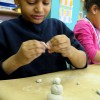
THIS LESSON USES THE NYC BLUEPRINT LEARNING STANDARDS.
Elementary students experiment with clay before making their own imaginary animals.
This lesson accompanies the following additional lessons:
"Creating a Cranimal"
"Cranimals in 3D"
"Paper Sculpture Habitats"
Research and Remedies

THIS LESSON USES THE NYC BLUEPRINT LEARNING STANDARDS.
What if a cure existed for: AIDS? Hunger? Poverty? Racism? Pollution? Corruption?
What would it look like? How can knowledge or understanding function as a cure?
Pop Shop 4 – Shopkeeping
Create and run a store to sell prints, pictures, tee shirts created in Pop Shop Lessons 1 - 3.
Mixing Up Magic
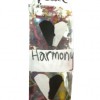
THIS LESSON USES THE NYC BLUEPRINT LEARNING STANDARDS.
This lesson is designed to allow students to experiment with the roles of scientists and graphic designers. Students will design a magic potion. The lesson gives students a chance to practice math and science skills such as mixing and measuring while learning about color, and design.
Texture: Wild Things
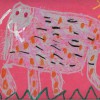
THIS LESSON USES THE NYC BLUEPRINT LEARNING STANDARDS.
This lesson is part one of a three lesson unit designed to teach young students (first or second grade) about various types of line, and pattern. This lesson allows children to learn how illustrators apply their knowledge of line and shading techniques to denote texture.
Pattern and Shading
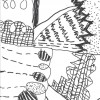
THIS LESSON USES THE NYC BLUEPRINT LEARNING STANDARDS.
This lesson is part two of a three lesson unit designed to teach young students (first or second grade) about various types of line, and pattern . Students will build upon their previous knowledge of line to develop an awareness of pattern and shading.
Lines: Invisible Journeys
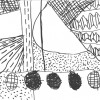
THIS LESSON USES THE NYC BLUEPRINT LEARNING STANDARDS.
This lesson is part one of a three lesson unit designed to teach young students (first or second grade) about various types of line, and texture. This lesson places emphasis on the movement students use to create lines by having them create visual roadmaps and follow them with gesture. The magic of their gesture will be reinforced as their invisible journeys are revealed to them through the technique of wax resist.
Crayon Rubbing Flip Book
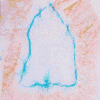
THIS LESSON USES THE NYC BLUEPRINT LEARNING STANDARDS.
This flip book lesson is designed to make learning about animation a more tactile, fun experience for young learners by eliminating tracing and bringing the line to life. Students will use their hands to gradually bend and reshape a line (floral wire), while recording this experience using crayon rubbings. The sequential crayon rubbings will become frames for their flip book.
This lesson is originally designed to accompany a math lesson about closed shapes, giving students an experience with the formation of flat sides, curves, and angles.
Many Chairs, One Table
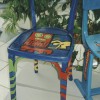
When a college student combines her studies in Art Education with a local high school, a large-scale sculptural work becomes the centerpiece.
Making Self-Portraits
A psychologically investigative examination and corresponding lesson dissect the purpose and meaning of self-portraiture.
Pop Shop 3 – Printmaking (Tee Shirts)
Learn printmaking, including printing Tee shirts, based on the images of Haring's work.
Making Masks
Merging ancient and contemporary art, this lesson examines the significance of mask-making in the past and present. A great starting point to larger projects, or a fast exploration for the less patient.